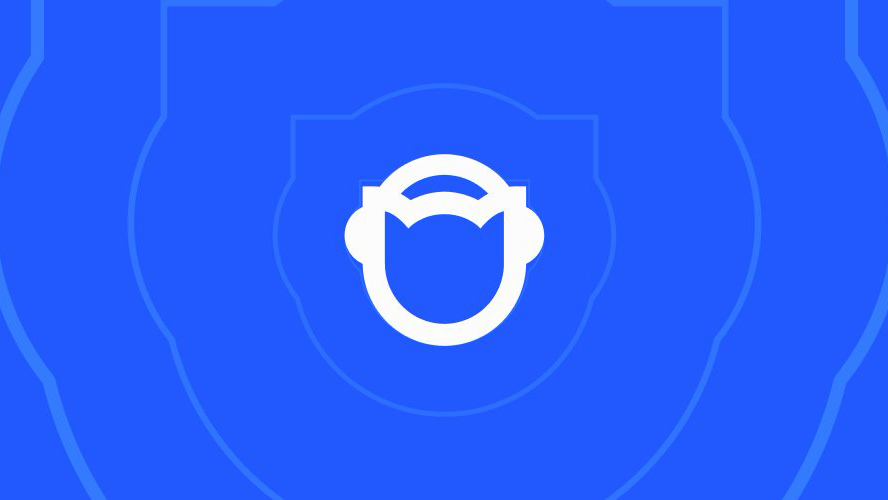What is Napster and how to upload your music free
From popularizing online file sharing, to transforming the music industry, here is everything you as an artist need to know about Napster.
Perhaps one of the most interesting back stories in the music streaming game, Napster has its roots in piracy and changed the shape of the industry to what it is today. Today, although fewer users than the big players, Napster has the features and catalog to keep up with the likes of Spotify and Apple Music. For independent artists and label managers, it’s important to ensure your music is live wherever your audience is. Reach more listeners by uploading to Napster today.
Click below to jump to one of the following:
How to upload to Napster
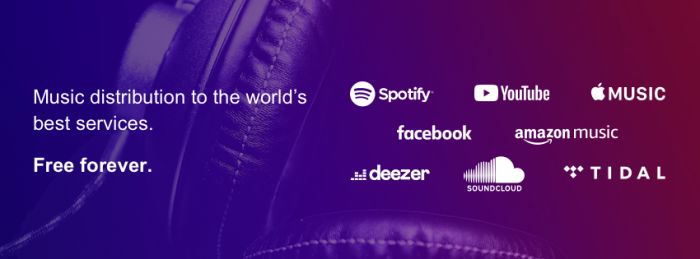
Since 2010, RouteNote has been partnered with Napster. Since then, we have seen the platform shift, grow and continue to support artists around the world. Many other distributors still don’t distribute to Napster, including DistroKid and Amuse.
Getting your music on to Napster and all of the other top stores and streaming services is free and easy when you distribute with RouteNote!
- Sign up to RouteNote.com
- Head to Distribution – Create New Release
- Fill out all of the required metadata, then upload your music and artwork
- In the Manage Stores page, tick Napster and any other stores you wish to distribute to
- Pick between Free or Premium Distribution
RouteNote Free has no upfront fees or recurring subscription cost. Artists keep 85% of the revenue. With RouteNote Premium, you keep 100% of the revenue generated. Premium has a small upfront fee and $9.99 annual cost. Labels and artists with an established audience should check out our All Access tier.
Unlike other distributors, features and stores remain the same regardless of the tier you choose. Whether distributing with our Free or Premium model, RouteNote artists always retain 100% of the rights to their music. You are free to switch any release to any tier and any time, or you can edit or remove a release entirely. It’s always your choice.
Once you’ve finalized your release, it will be sent to our moderation team. Each release is checked by a human for formatting and copyright errors. They aim to get to your release within 72 hours of it being sent in, however times can extend during busy periods.
After approval, your release will be promptly sent to Napster, who usually gets music live within 7 days. If after 14 days you still can’t see your music on Napster, drop us a message with your release UPC.
Statistics and earnings are reported from most stores 45 days after the close of each month. This means, if your music is streamed in January, you will see the statistics and earnings appear on your RouteNote account from the 15th of March. However for Napster, this is extended to 75 days after the close of each month. Meaning this data and money will appear in the following month’s (April in this example) report.
Napster’s technology powers various other services. When you distribute to Napster, your music will also be sent to the following partners:
- Mobile/Telco Operators
- SFR
- Vivo
- Telefonica
- Drillisch
- Terra
- Huawei
- Retail & E-Commerce
- Rakuten
- Aldi Life Music
- Hofer Life Music
- RecoChoku (powers Tower Records)
- Auto
- Radio
- Audacy
Statistics for these stores will be included under Napster’s earnings.
What is Napster?
Today, another music streaming service, but at the turn of the millennium, Napster transformed the music industry to the way it is today, for better and worse.
How did Napster start?

In a time of CDs, cassette tapes and vinyl, just as the internet’s popularity was booming, Napster launched the first popular (thanks to its user-friendly interface) peer-to-peer file sharing application in 1999, with an emphasis on MP3 digital audio files.
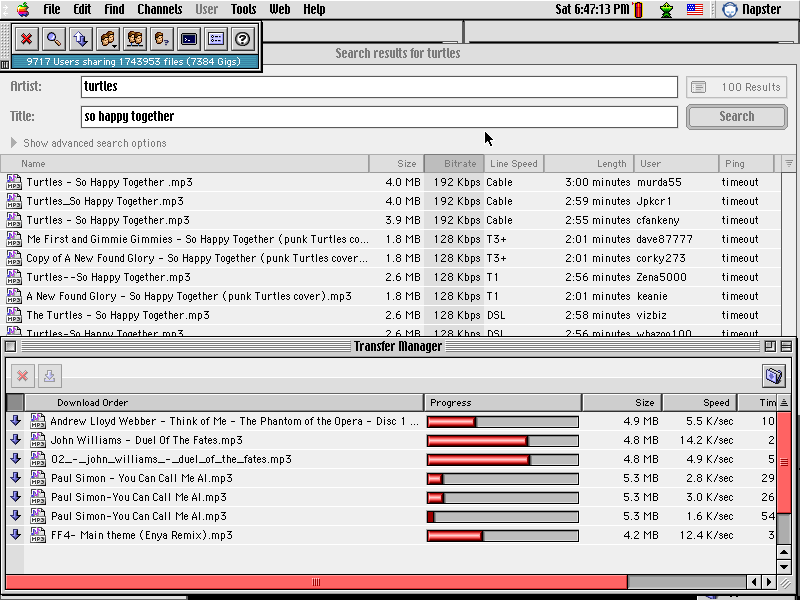
Regardless of its legality, within months, Napster was a hit! Peaking at around 80 million registered users, high-speed networks in college dormitories became overloaded, with some system administrators claiming as much as 61% of external network traffic consisting of MP3 file transfers.
While its popularity was in part due to providing free access to music for the first time, it was also one of the simplest ways to access music overall. Long before music streaming, with Spotify’s launch in 2008, and even before the launch of the iTunes Store in 2003, Napster gave millions of people the ability to get music without leaving the house, for the first time.
It goes without saying, the music industry wasn’t happy with their loss in music sales. Napster soon ran into legal difficulties over copyright infringement. Lawsuits arose from record companies and high profile artists such as Metallica, Dr. Dre and Madonna. This ‘free advertising’ did nothing to slow Napster’s success. In fact, against their best wishes, attention from big names only increased interest in the platform and brought in more traffic over time.
That being said, not all artists were against Napster. Some artists, especially those not signed to major labels and therefore without traditional marketing tools, saw Napster as a great promotional platform. Many suggest Radiohead’s Kid A album scored number one on Billboard, thanks in part to early excitement, driven by Napster.
Eventually, Napster was shut down by court order and ceased operations in 2001, with the company filing for bankruptcy a year later.
Love it or hate, whether you’re an artist or consumer, Napster undeniably changed the course of the music industry, kickstarting music delivery on the internet. Napster is somewhat responsible for digital online stores like the iTunes Store and music streaming services like Spotify. In fact, Apple even called out Napster and Rhapsody during the launch of the iTunes Store.
Against all odds, this wouldn’t be the death of Napster though. Roxio acquired their assets and Napster re-emerged as an online music store in 2003, commonly known as Napster 2.0. Come 2008, Best Buy purchased the service, before 2011, where Rhapsody acquired it and merged it with its own music streaming service. In 2016, Rhapsody rebranded it back to Napster internationally. Rhapsody International and Napster were sold to MelodyVR in 2020, with the virtual reality concerts company renaming itself to Napster Group PLC. Finally, in 2022, Napster was sold once more to Hivemind and Algorand.

The basic features of Napster
The Napster mobile app has four tabs in the navigation bar at the bottom of the screen.
Home is where to go for a selection of recommended music, tailored to your tastes. Napster serves up recently played music, playlists, new releases, live performances, music videos, and releases from the artists and genres you’ve shown interest in.

The Watch tab brings up just video content from Napster, including new music videos, popular music videos, music videos under specific genres, and additional content like live performances, documentaries and interviews.

Got something in particular you want to listen to? Head to Search, where you can use the search bar at the top of the screen to find the exact artist, song or video you’re after. Use this tab also to browse generic content. You’ll find all moods and genres, as well as popular tracks, albums, artists and music videos.
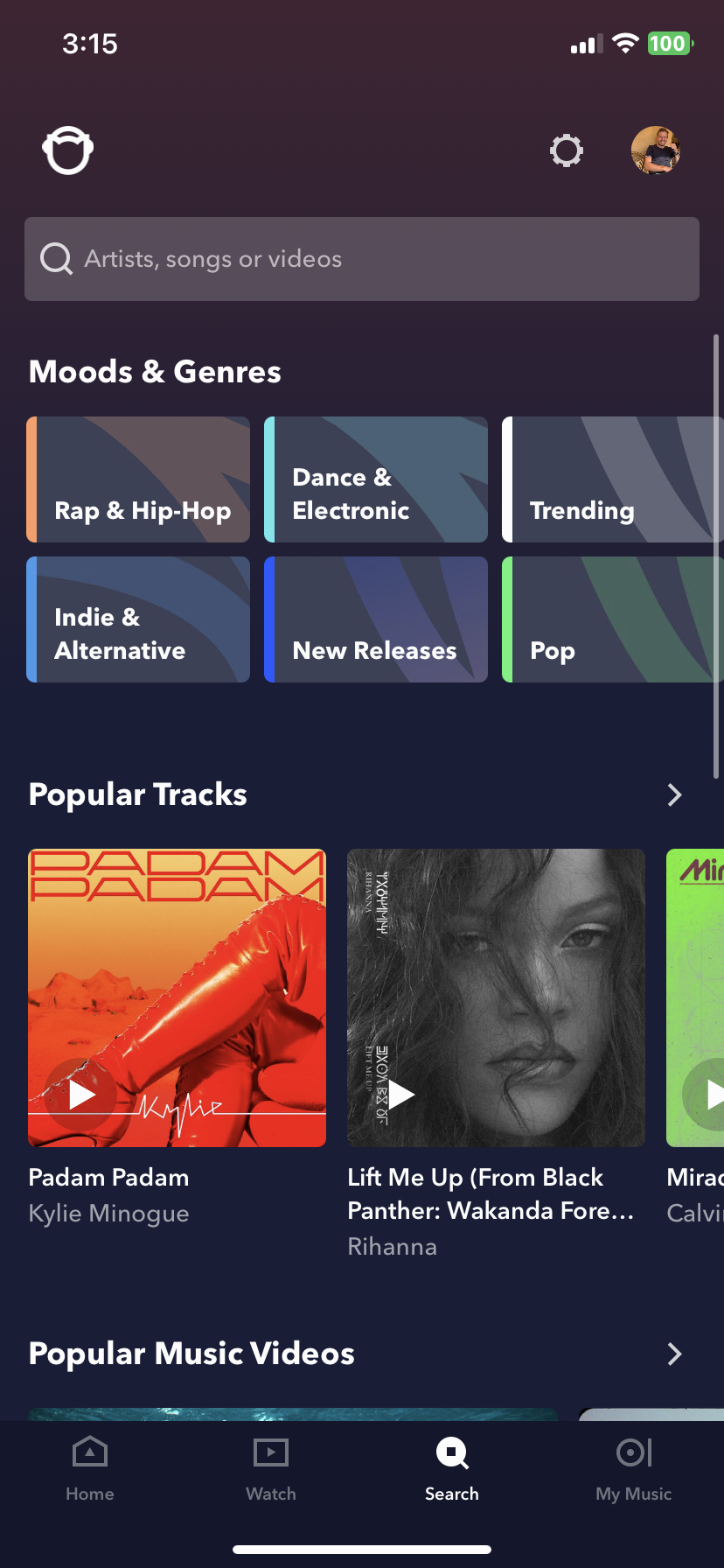
The final tab is My Music. Here you can find all of the music and videos you’ve saved over time. This includes the playlists you’ve created and followed, as well as recently played music, favorites and downloaded tracks, albums, artists, videos and radio stations. There’s also ‘My Top Plays’, which breaks down your most-played artists, albums and tracks, filtered by week, month, year or all time.

Click on the profile icon in the top right corner to edit your user profile. Here you can customize your name, username and profile image, plus find friends.
Use the cog icon at the top of the screen to access the settings. You can access and edit account information, notifications, audio settings and toggle Offline Mode. From Audio Settings – Audio quality, you can choose between Efficient (AAC 64 kbps), Normal (AAC 192 kbps), High (AAC 320 kbps) and Lossless (44.1 kHz/16 bit), whether playing over WiFi, Cellular or Downloads.
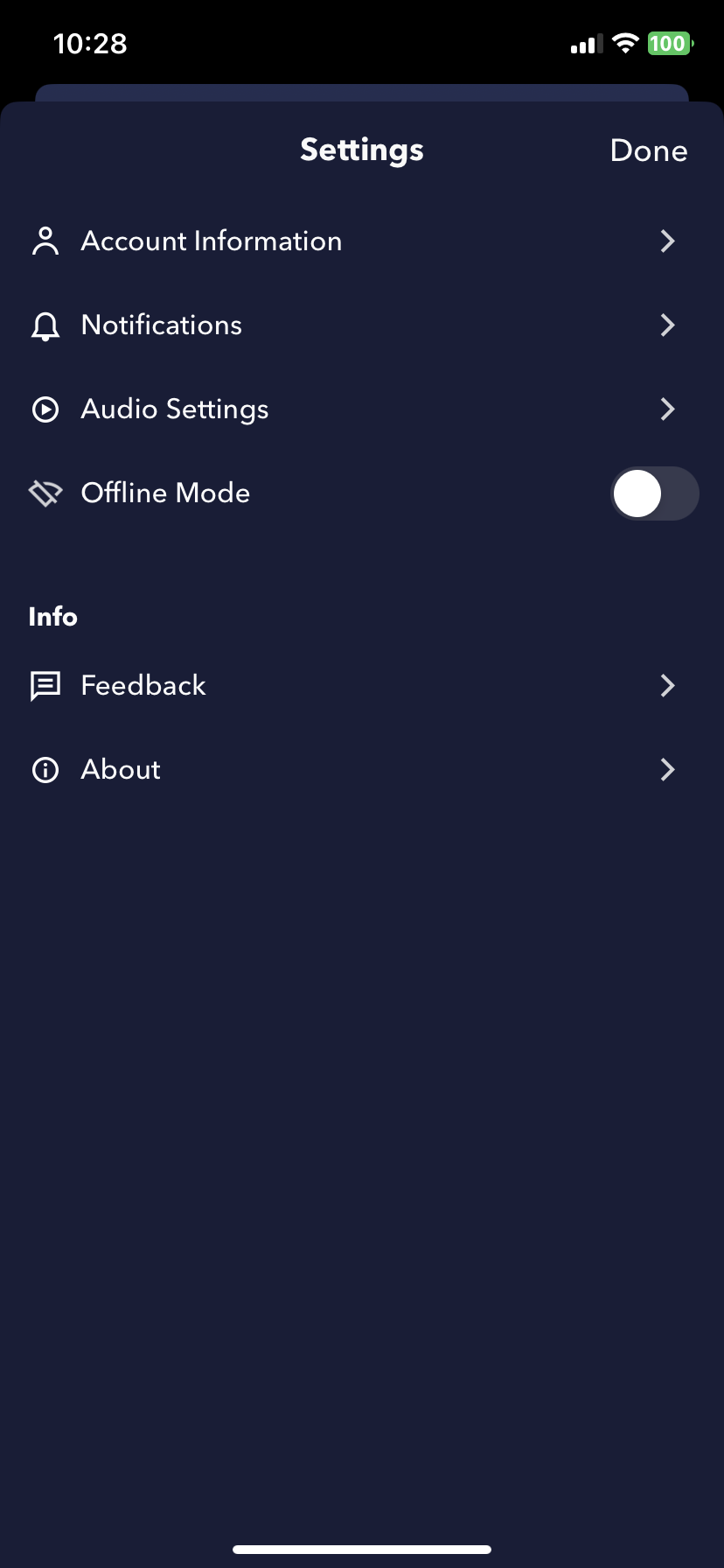
How many tracks are on Napster?
Napster’s homepage advertises an impressive 110+ million tracks. This is higher than all other streaming services, including leading stores like Spotify and Apple Music. Music on Napster comes from major labels, independent labels and distributors, like us! In fact as of 2019, indie artists on the platform make up a third of Napster’s most streamed artists.
Users will also find hundreds of thousands of official music videos, mixes made for you across genres and moods, as well as exclusive and curated playlists such as Discover and New Music Weekly.
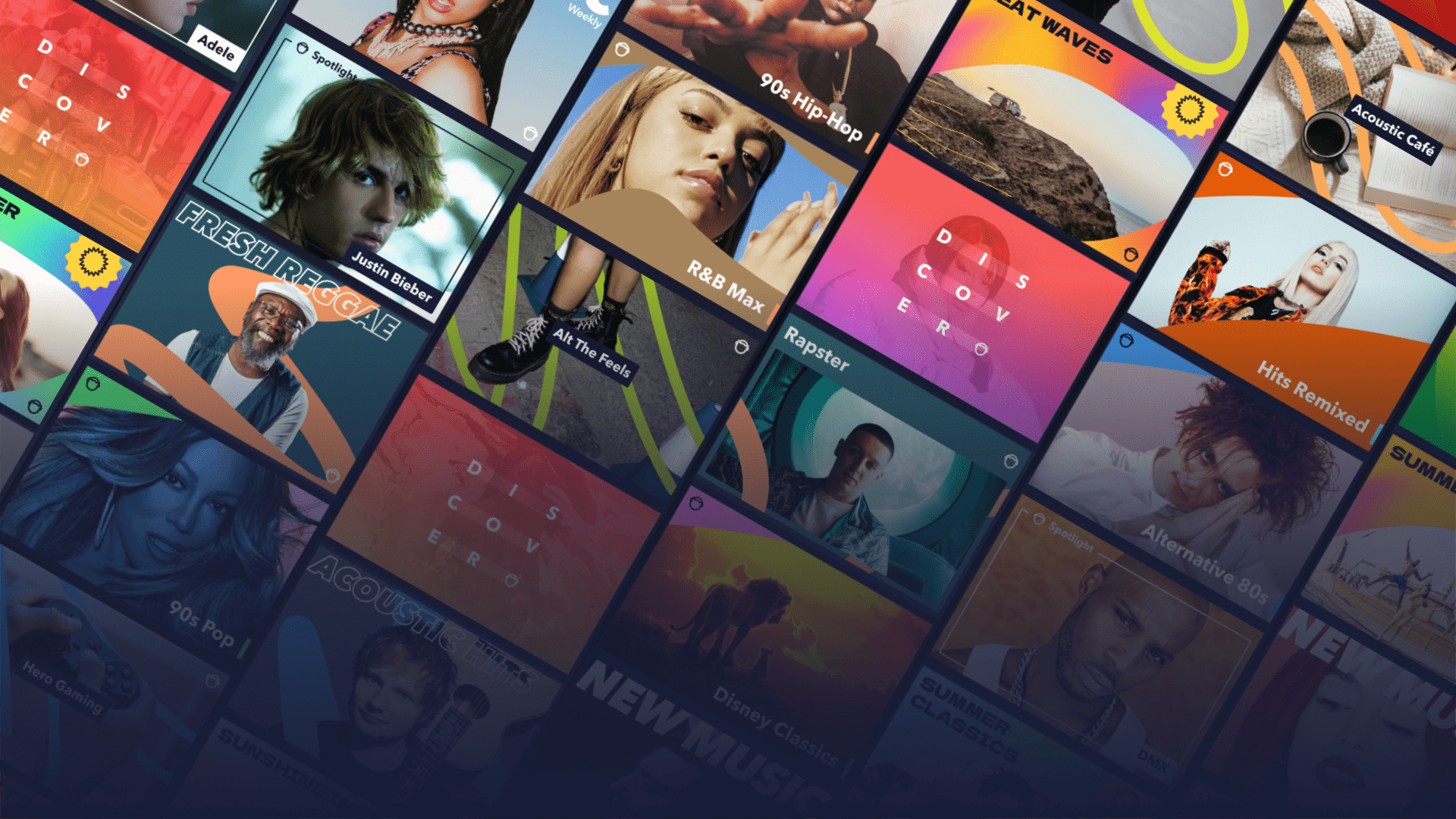
Napster subscription types
Napster is a subscription-only streaming service. There is no ad-supported free tier. You must be a paying subscriber to access Napster. All subscriptions come with 30 days free for new users. The following US prices are based on subscribing outside of app stores, which can add additional fees.
Subscribing to Napster’s Individual plan provides listeners with ad-free listening on all devices. Select tracks are available in lossless audio quality, up to 44.1 kHz/16 bit. Users can download tracks for offline playback.
Individual plans are $10.99, which is on par with the pricing of other music streaming services such as Spotify and Apple Music. There’s also an annual plan, which is $99.99 per year, which will save you over $30 across the year.
Napster’s Family plan gives up to six users their own individual unique profile. Family subscriptions are $14.99 per month or $149.99 per year.
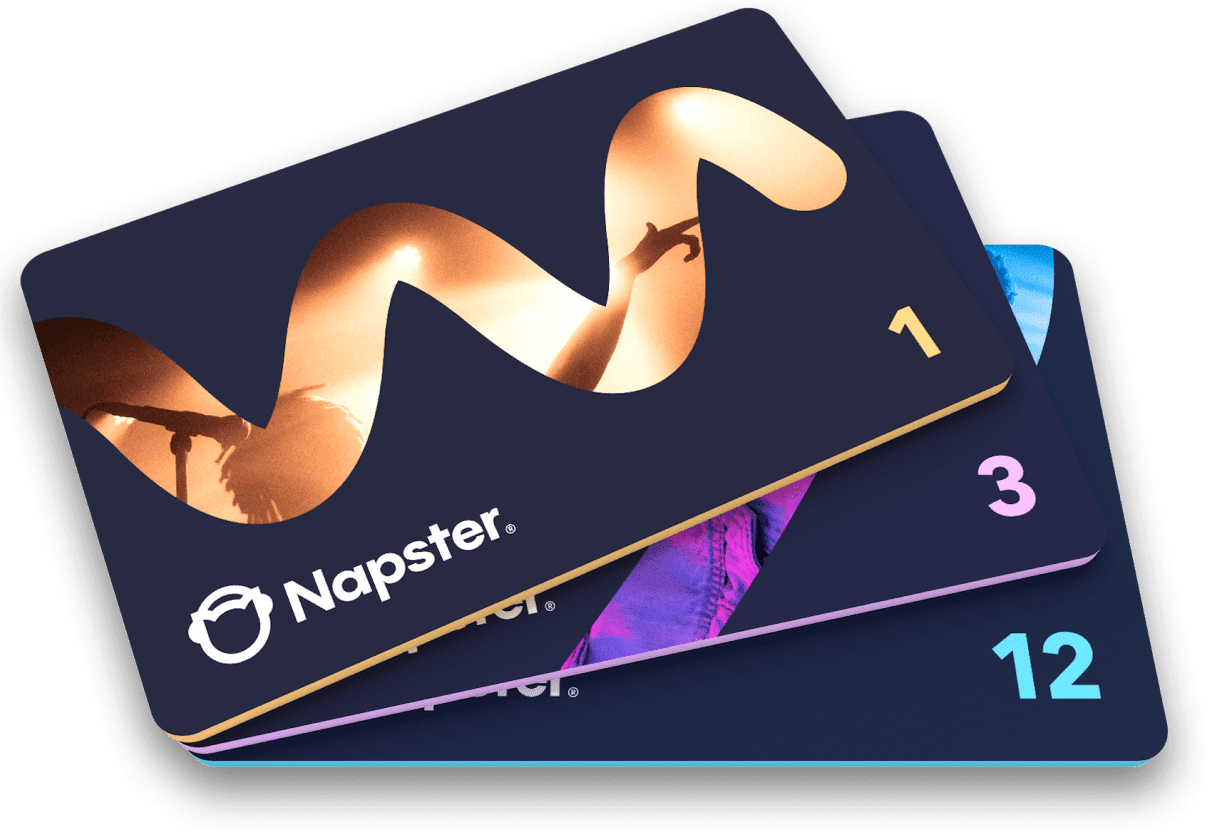
All Napster tiers compared
- Napster Individual
- $10.99/month
- $99.99/year
- Napster Family – six profiles
- $14.99/month
- $149.99/year
How to stream Napster
Napster is available in 33 countries, including:
- Andorra
- Argentina
- Österreich
- Brasil
- Canada
- Chile
- Colombia
- Costa Rica
- Danmark
- Ecuador
- El Salvador
- Suomi
- France
- Deutschland
- Ελλάδα
- Guatemala
- Ireland
- Italia
- Luxembourg
- México
- Monaco
- Nederland
- Nicaragua
- Norge
- Panamá
- Perú
- Portugal
- España
- Sverige
- Schweiz
- United Kingdom
- United States
- Uruguay
Subscribers can access Napster on plenty of devices including:
- Desktop
- Windows
- Mac
- Web
- Mobile
- iOS
- Android
- TV
- Samsung
- LG
- Xbox
- Fire TV
- Stream
- Chromecast
- Wearables
- watchOS
- Wear OS
- Home Audio
- Sonos
- Auto
- Android Auto
- CarPlay
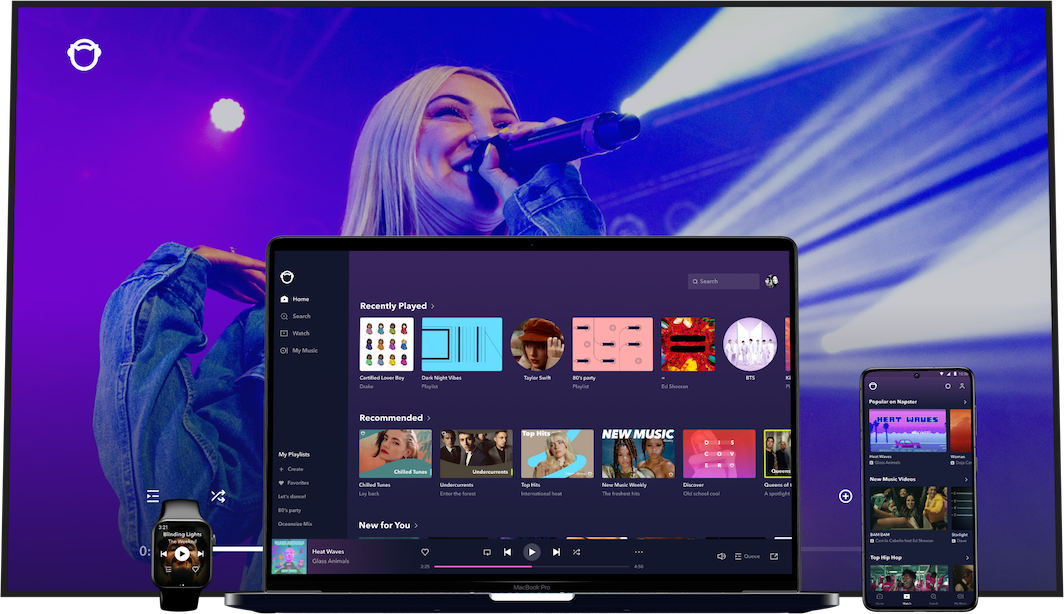
How does Napster compare with the competition?
Although smaller than many music streaming services like Spotify and Apple Music, Napster’s features aren’t to be scoffed at.
- Pros
- Large catalog of music
- Pays artists well
- Reasonable annual and family pricing
- Available on many devices
- Lossless music at no extra cost
- Cons
- No free tier
- No artist portal
- Limited availability – not in Africa, Asia or Oceania
- Lossless tops out at 44.1 kHz/16 bit – no 192 kHz/24 bit option
If you fancy switching or just giving Napster a go, you can transfer your library from another streaming service for free within the 30-day free trial period.
Artists
So you’ve learned all there is to know about Napster and even uploaded your music there… now what? Now it’s time to refresh your artist page on the streaming service. Unfortunately Napster does not have an artist portal like Spotify for Artists to customize your profile, access deeper insights and promotional options. However, as you’re distributing with RouteNote, we’ll go the extra mile for you.
How to customize your Napster artist profile
You can customize your Napster profile image by sending us an image. Napster currently doesn’t offer changes to artists’ bios.
To change your Napster image, drop support@routenote.com an email with your Napster artist name and a 3:2 JPG image. Your image must be at least 1500 x 1000 pixels, with 1920 x 1280 preferred.
How much does Napster pay-per-stream?
As with other streaming services, Napster does not pay artists a flat rate per stream generated. Artists are paid on a pro-rata model. This collects all streaming revenue from subscriptions around the world and pays artists based on the portion of streams they received across the month. As subscription prices vary around the world, this number changes month-by-month.
As a premium-only streaming service, Napster’s estimated pay rate is higher than streaming services that also offer a free tier. Generally ad-supported tiers generate far fewer dollars than premium subscriptions. This, as well as the service not being available in any African or Asian countries, where subscription prices are generally lower than in other continents, leads to particularly high payouts.
From offering music for free in the early 2000s, Napster is now one of the best paying music streaming services in the business. Napster has an estimated average payout of around $0.019 – $0.021 per stream, or around 2 cent. This means an artists needs around 50 streams to earn a dollar and around 50,000 to make their first $1,000. This is a far higher rate than Spotify for example, who are estimated to pay around $0.003 – $0.005 per stream, requiring around 250 streams to earn a dollar.
How to market your music with PUSH.fm
Our friends over at PUSH.fm offer free marketing tools, ideal for independent artists and online creators.
Smart Links
So you’ve got your music on all of the world’s largest streaming services, but how do you accommodate all of your fans with a single link?
Smart Links on PUSH.fm gather all of the links you need on a single page. With a number of templates available, Fan Links are great for musicians looking to share their track that’s available on multiple stores in a single, beautiful landing page.
Fan Links are fully customizable, from the title and description, to the images and URL. You can create an unlimited amount with a free PUSH.fm account.
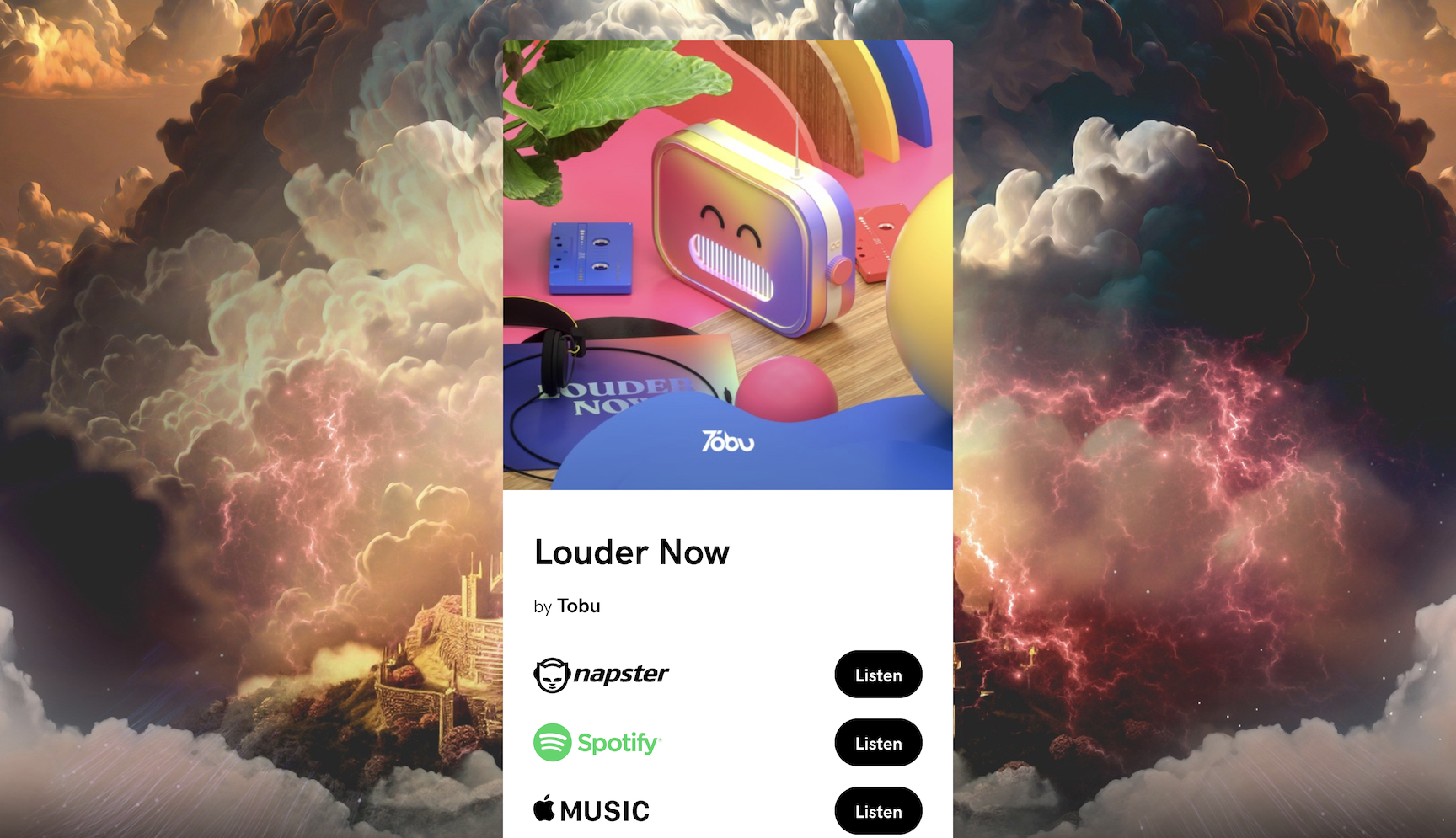
Statistics
So you’ve got your Fan Link up and running. How do you know if anyone’s actually using it or how they’re using it? That’s where performance data comes in.
PUSH.fm provides detailed insights on every one of your links, showing how many visits, conversions, engagement, top services, device types, traffic sources and more, that can be broken down by hour. This information is crucial for independent artists and label managers looking to target future marketing campaigns.
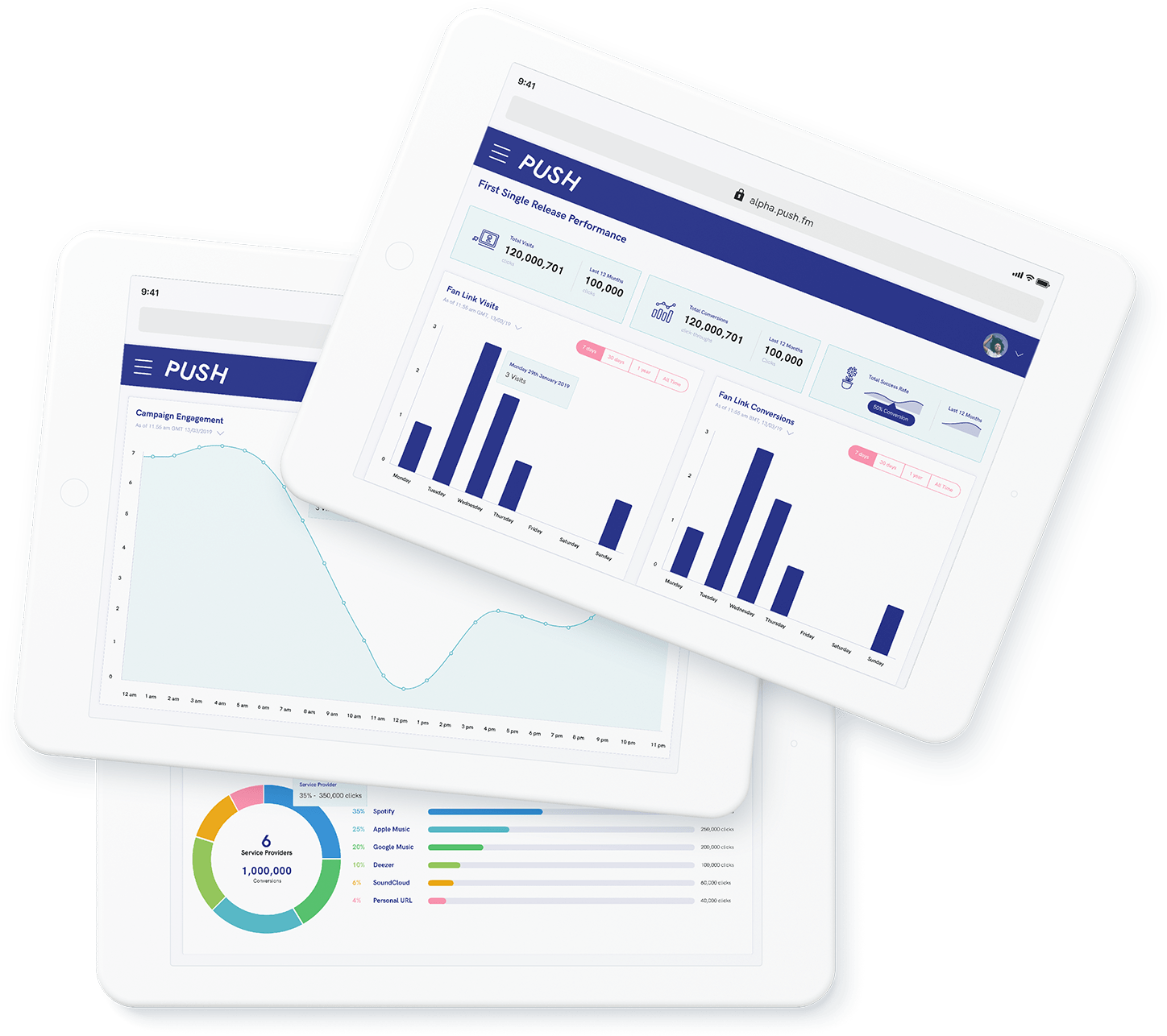
Discover all that PUSH.fm has to offer for you and your music here!
